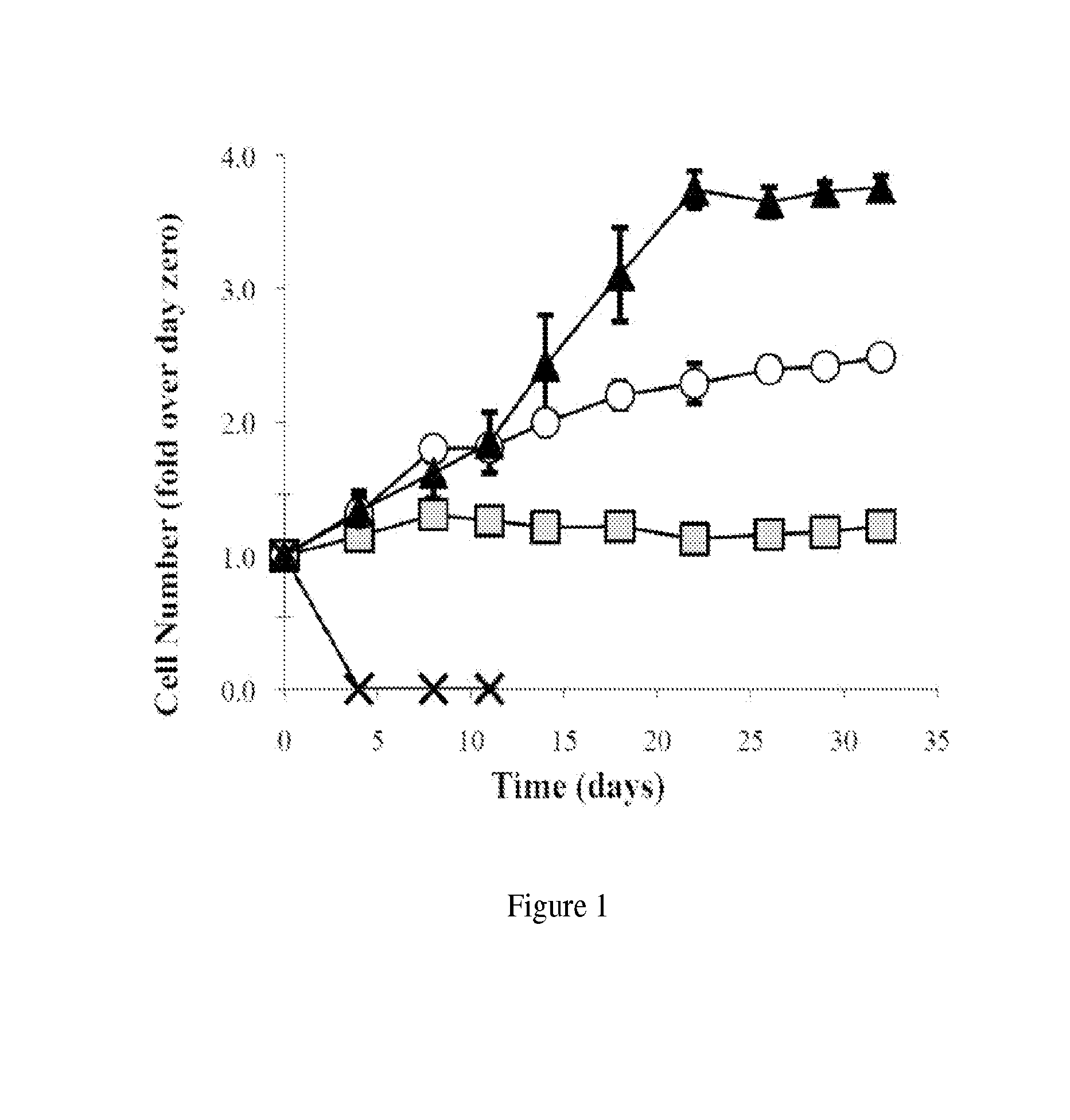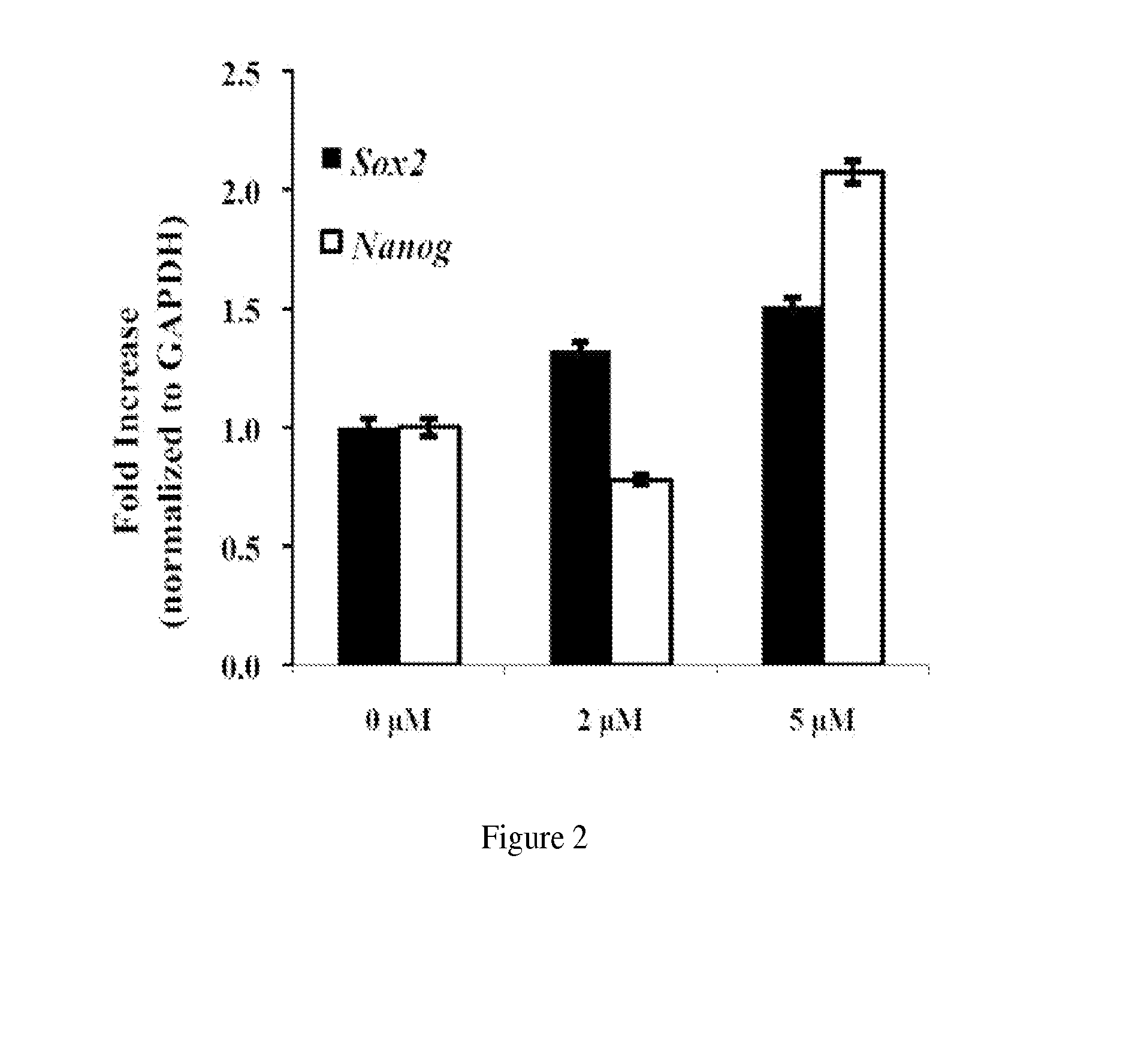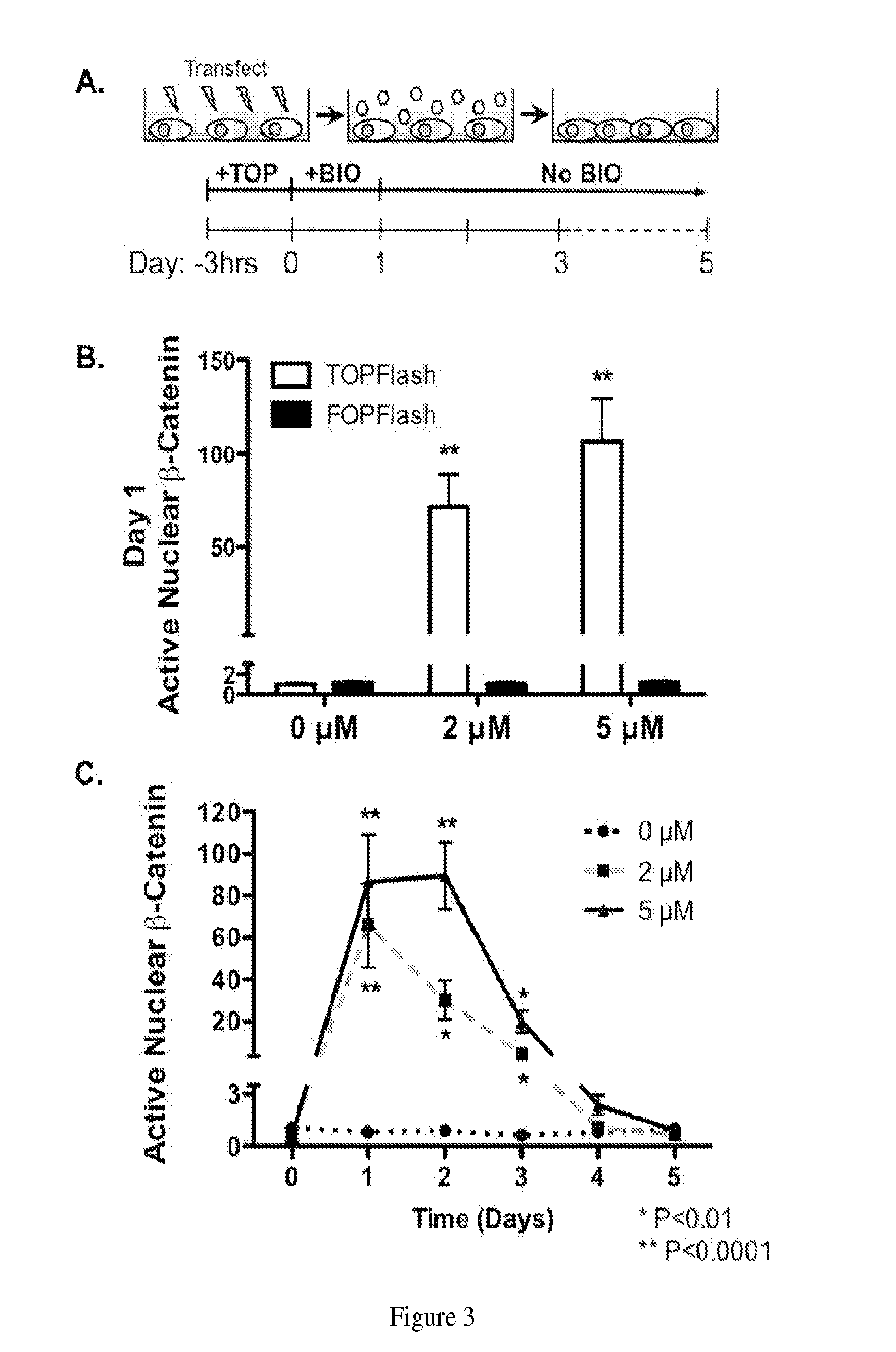Methods and compositions for mesenchymal stem cell proliferation
a mesenchymal stem cell and composition technology, applied in the field of mesenchymal stem cell proliferation methods and compositions, can solve the problems of reduced proliferation, increased senescence of cells, and high heterogeneity of msc population, and achieve robust proliferation and “stemness”, promote critical-sized defects healing, and induce robust expansion in vivo
- Summary
- Abstract
- Description
- Claims
- Application Information
AI Technical Summary
Benefits of technology
Problems solved by technology
Method used
Image
Examples
example 1
[0024]A. BIO Induces hMSC Proliferation
[0025]The small molecule GSK3β inhibitor 6-bromoindirubin-3′-oxime was synthesized as previously described (Polychronopoulos et al., J Med Chem. 2004; 47(4):935-46). It is also commercially available (such as from Sigma). The molecule was solubilized in dimethyl sulfoxide (DMSO) to specified concentrations. hMSCs were plated at a density of 5,000 cell / cm2 in 24-well tissue culture plates. Cells were allowed to become adherent for a period of 24 hrs before BIO was introduced. 10 μL of BIO in DMSO were added to 1 mL of culture media so that the final concentrations of 2, 5, and 10 μM were achieved. The hMSCs were cultured with BIO-containing media for 24 hrs after which media was replaced by media without BIO. Culture continued over 33 days with media being replaced every three days. An alamarBlue cell viability assay was performed on days: −1 (before BIO treatment), 0, 4, 8, 12, 14, 17, 23, 26, 28, and 33. Cell population was normalized to alama...
example 2
2. Materials and Methods
[0029]All materials were purchased from Sigma-Aldrich unless otherwise specified.
2.1 Synthesis of 6-Bromoindirubin-3′-oxime (BIO)
[0030]The small molecule GSK3β inhibitor 6-bromoindirubin-3′-oxime (BIO) was synthesized as described in Example 1 (FIG. 2a). The resulting product was verified via NMR (1H-NMR (DMSO, 400 MHz, δ ppm) 13.61 (1H, br s, NOH), 11.72 (1H, s, N′—H), 10.85 (1H, s, N—H), 8.53(1H, d, H-4), 8.19 (1H, d, H-4′), 7.39 (2H, br s, H-6′, 7′), 7.07 (1H, d, H-5), 7.01 (2H, br s, H-7, 5′) and matrix-assisted laser desorption / ionization time of flight (MALDI-TOF) mass spectroscopy (m / z 356 g / mol).
2.2 Synthesis of Poly(Ethylene Glycol) (PEG) Macromers Poly(Ethylene Glycol) Dimethacrylate (PEGDM)
[0031]Methacrylation of linear PEG (Alfa Aesar) with average molecular weight 10 kDa was performed. Methacrylic anhydride was combined with PEG at a molar ratio of 5:1 (methacrylic anhydride:PEG) in a glass scintillation vial. The vial was then microwaved (1100 W...
PUM
 Login to View More
Login to View More Abstract
Description
Claims
Application Information
 Login to View More
Login to View More - R&D
- Intellectual Property
- Life Sciences
- Materials
- Tech Scout
- Unparalleled Data Quality
- Higher Quality Content
- 60% Fewer Hallucinations
Browse by: Latest US Patents, China's latest patents, Technical Efficacy Thesaurus, Application Domain, Technology Topic, Popular Technical Reports.
© 2025 PatSnap. All rights reserved.Legal|Privacy policy|Modern Slavery Act Transparency Statement|Sitemap|About US| Contact US: help@patsnap.com



